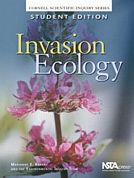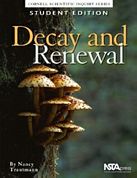About Environmental Inquiry
Environmental Inquiry (EI) is a website and
curriculum series developed at Cornell University to help students conduct
environmental science research. Our goals are for students to:
1) Develop research skills,
2) Use these skills to design and conduct research
projects focusing on relevant local environmental science topics,
3) Participate
in communities of fellow student scientists, and
4) Enhance their understanding
of scientific content and process.
Rather than learning science as a static body of facts, EI students experience
the research process through which scientific understandings are formed and
continually revised. Instead of memorizing a "scientific method,"
they discover for themselves the multifaceted nature of scientific research.
By studying problems relevant to their communities, they discover interconnections
between science and society.
Levels of Inquiry
EI is organized
into two levels of inquiry
modeled after research activities conducted by professional scientists. Students
first learn standard research methods, or protocols. Then, they explore
possibilities for using these protocols to address relevant research questions.
After planning and carrying out one or more interactive research experiments,
students present and discuss the results with their peers and possibly also
with interested community groups.
EI Websites
In order to provide interactive web-based opportunities for
students, we have created two websites:
1) The Cornell EI site you currently are visiting, which
is designed for use by high school students and teachers, and
2) Our EI
site at Penn State University, which is designed for use by undergraduate science
and science education students and faculty.
EI Participants
What do teachers
and students think about Environmental Inquiry? Click
here to hear their thoughts.
EI Curricula
Together with
the National Science Teachers Association, we are publishing four curricula,
each consisting of a student edition and teacher's guide:
Assessing Toxic Risk
Students use bioassays to assess environmental
health and make judgments about acceptable levels of risk. Currently
available.
Ecology of Invasive Species
Students experiment with biological
control, and measure impacts of invasive species on plant and animal communities
and nutrient cycling. Currently available.
Decay and Renewal
Students explore the role of microorganisms and invertebrates in decomposing
wastes and enhancing soils and aquatic environments. Currently
available.
Watershed Dynamics
Students use aerial photographs, maps, and stream measurements to assess land
use practices and their impacts on riparian habitats and water quality. Currently
available.
   
The EI Team
EI represents
a collaborative effort among scientists, science educators, and high school
and middle school teachers. More about
the EI Team.
|

